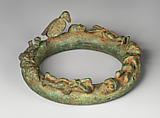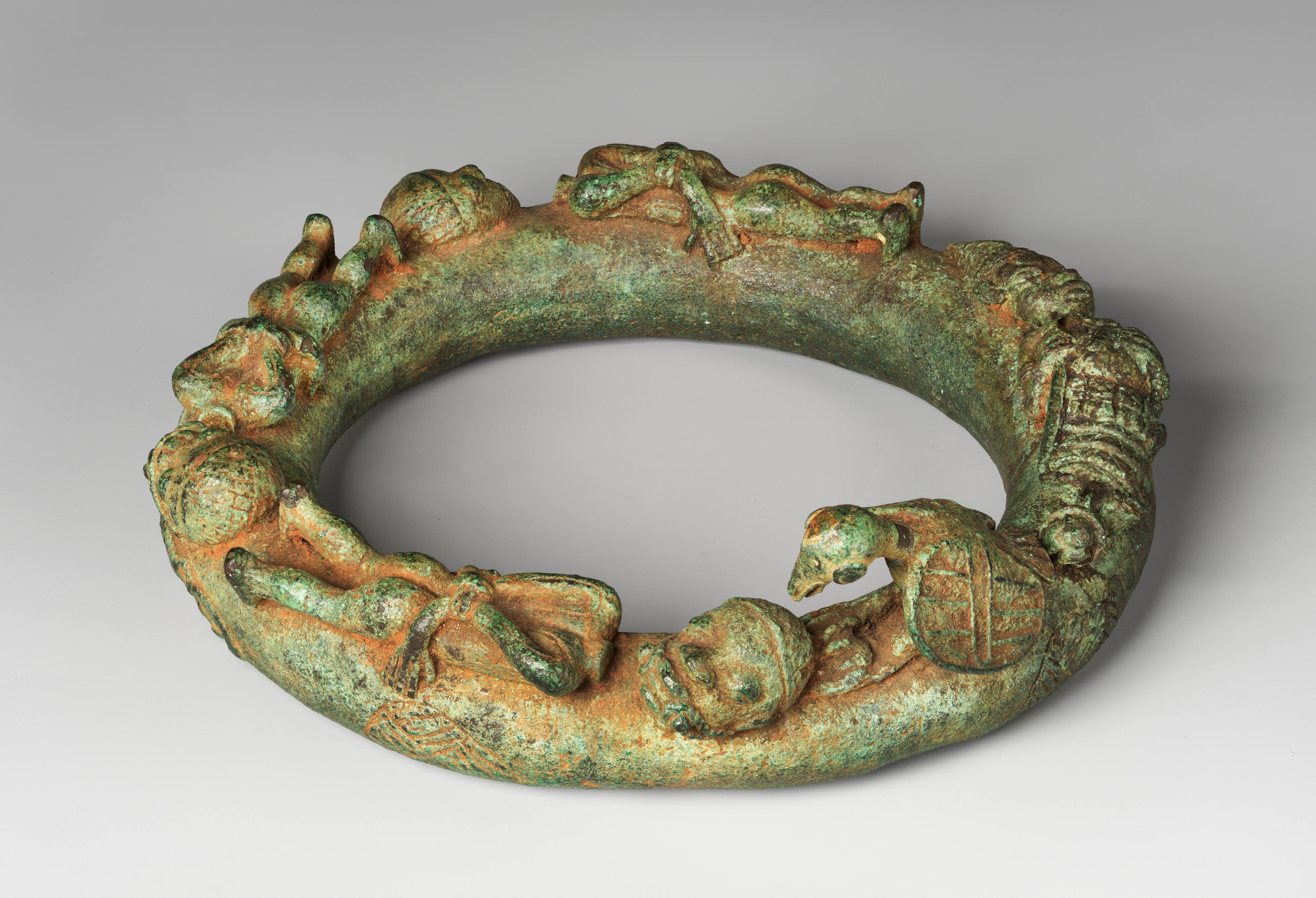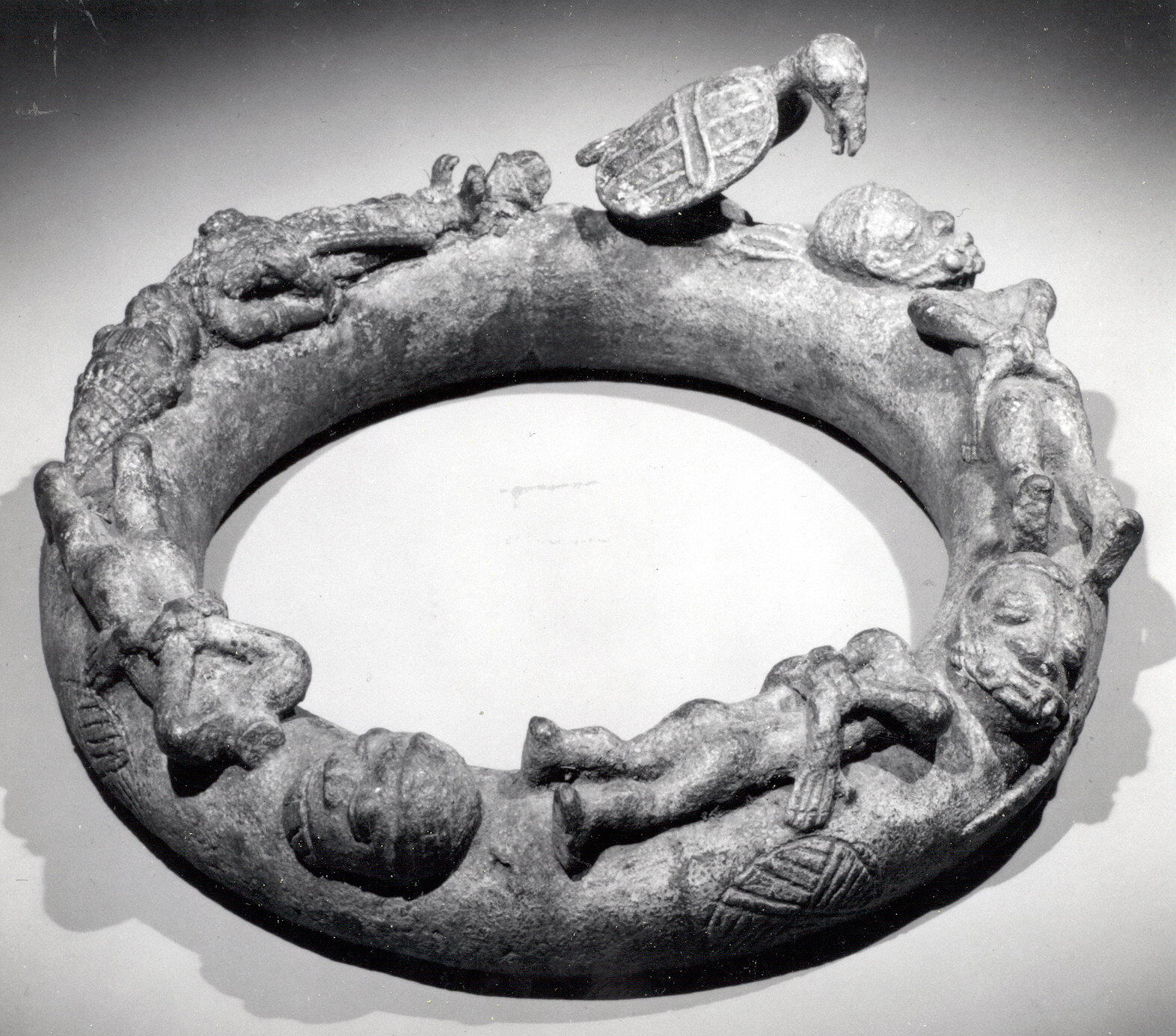Altar Ring
Not on view
Works in metal in a wealth of bronzes in a variety of styles and types are found throughout the southern half of Nigeria, especially along the lower part of the Niger River.
The numerous "Lower Niger bronzes" discovered in Benin at the end of the nineteenth century that were long considered to be of local origin are now thought to come from a number of locations and time periods; some are from the Igbo-Igala area, but most were made in centers influenced by Yoruba and Benin art. Scientific dating of the clay cores in several of these sculptures revealed that a few were made as early as the fourteenth century. Some must, therefore, be contemporary with the naturalistic bronzes of Ife and may be provincial reflections of Ife style.
In the Yoruba center of Ijebu, brass casters drew upon motifs found in Benin and Owo which they translated into distinctly Ijebu configurations of composite animal, bird, and fish forms. The complex regional interrelationships that have historically existed between Benin, Owo, and other Yoruba casting traditions are underscroed by a shared tradition of cast-metal altar rings. The iconography of a group of about twenty examples is related to sacrifice.
Due to rights restrictions, this image cannot be enlarged, viewed at full screen, or downloaded.
This artwork is meant to be viewed from right to left. Scroll left to view more.




